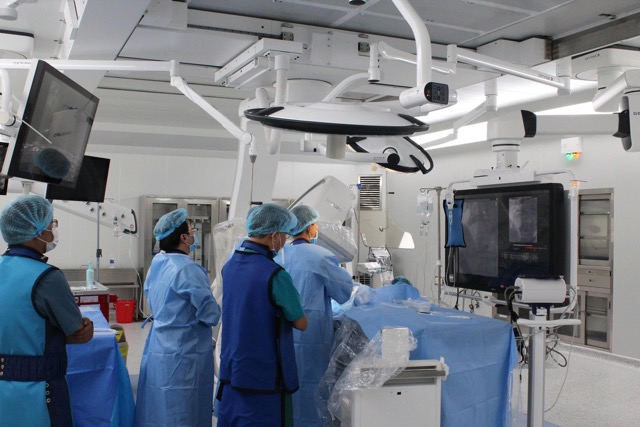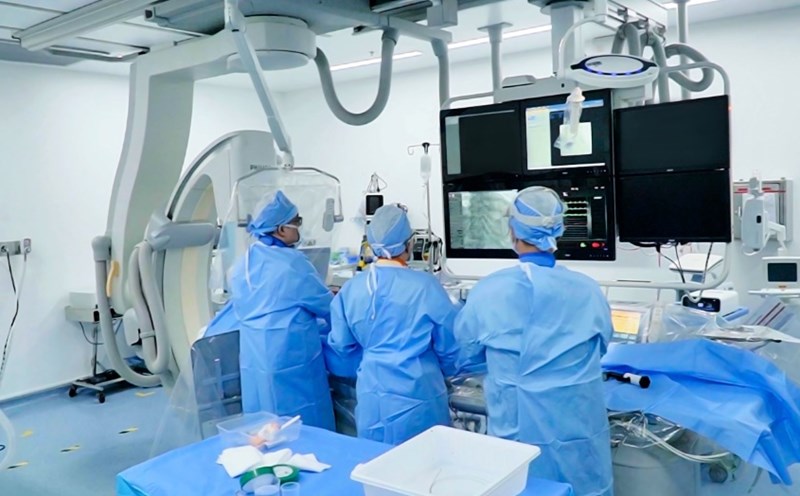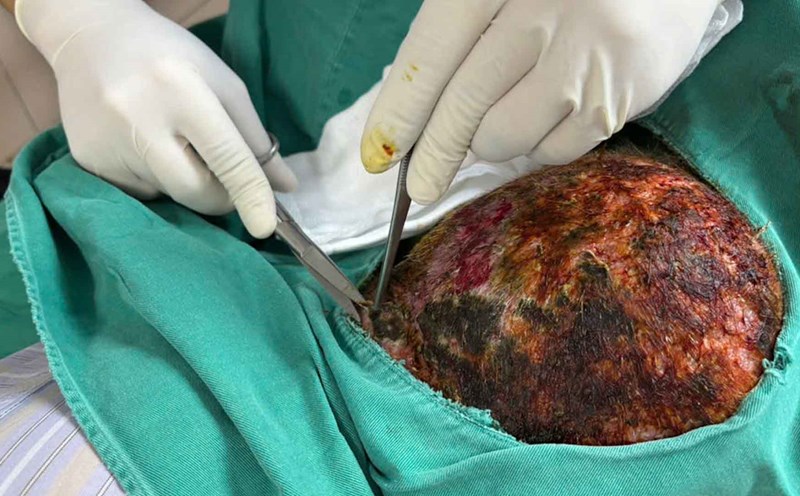At the age of 82, Mr. Nguyen K. (residing in Dak Lak) has many dangerous underlying diseases such as high blood pressure, dyslipidemia, chronic obstructive pulmonary disease and chronic kidney disease stage three. Six months ago, he was hospitalized with continuous left chest pain, pain that occurred even at rest accompanied by sweating and difficulty breathing.
The CT scan of the coronary artery showed that he had narrowing of three branches of the coronary artery, a condition in which all three major blood vessels that nourish the heart are severely narrowed. Doctors at Hong Duc II General Hospital quickly intervene, placing stents in two locations: a right branch and a frontal branch on the left. After the procedure, Mr. K's health improved significantly, and his symptoms of chest pain decreased, so he continued to receive internal medicine treatment and regular monitoring.

However, in early October, he experienced more chest pain, especially at night, feeling "stuck in the chest" with difficulty breathing and sweating. The family immediately took him back to the hospital. This time, the scan results show that the capillary artery branch (LCx), which was previously only narrow to medium, has now progressed severely. If not treated promptly, the patient is at risk of myocardial infarction, even death.
"We decided to intervene immediately to reopen the narrowed blood vessels. Due to the patient's age, the coronary artery was fibrotic and highly calcificated, the stent placement process encountered many difficulties, requiring modern techniques and support tools. Fortunately for the successful intervention, Mr. K. is now stable and continues to be monitored and treated, shared Specialist Doctor II Pham Xuan Hau, Head of the Department of Cardiology - Hong Duc II General Hospital.
Doctor Hau also said that for elderly patients with many underlying diseases, the risk of narrowing or complications after stenting may occur more. This ability depends on genetic factors, blood vessel condition and most importantly, compliance with the right lifestyle, diet and medication. If patients stop taking medication and eat without regulation, the risk of narrowing and progressive coronary artery damage will be higher. Therefore, adhering to long-term treatment is a decisive factor, Dr. Hau emphasized.
After the procedure, the patient was also monitored, given comprehensive care, and had his ability to strive to assess the level of recovery, thereby having appropriate instructions to return to normal activities soon.











